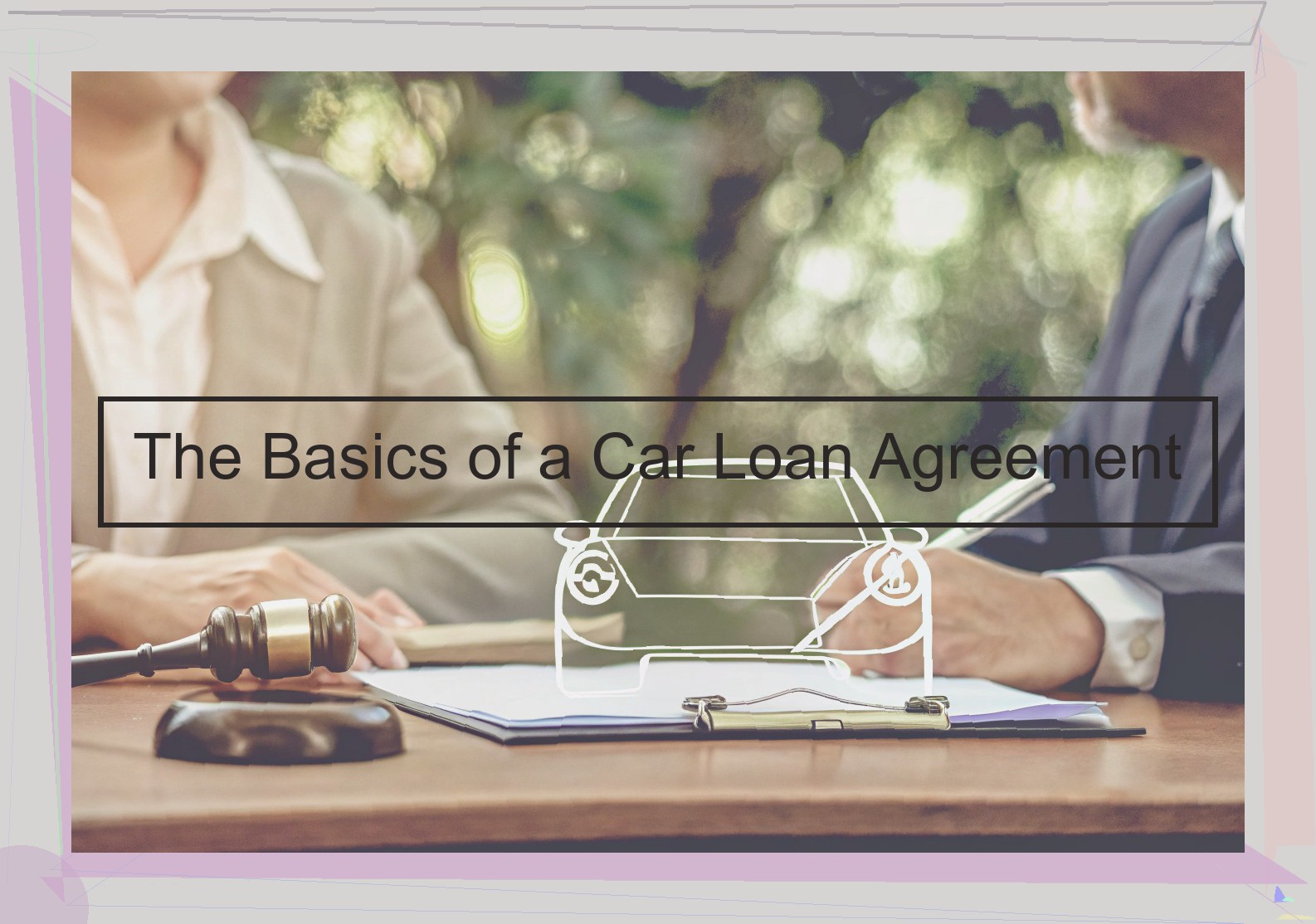What’s a Car Loan Agreement?
A car loan agreement is a legally enforceable commitment between a buyer (or borrower) and a lender in order to acquire a motor vehicle. A car loan agreement lays out the basic terms and responsibilities associate with the loan agreement, making it one of the most important actions associated with acquiring a new or used vehicle. For the borrower, the car loan agreement outlines the borrower’s obligation associated with the financing. For the lender, the agreement outlines the penalties and ability to recoup the money lent to the borrower in the event of late payments or other defaults on the loan. In short , the car loan agreement defines the agreement between the lender and the buyer if the buyer does not pay off the costs associated with the car loan agreement.
It should be noted that these agreements are usually intended for motor vehicles as defined by your local jurisdiction. Commonly, this includes any form of roadway or waterway vehicle or any vehicle that can be driven safely on public roads. Car loan agreements, of course, also apply to motorcycles and trucks. Farm vehicles and other specialized vehicles can also fall under the purview of a car loan agreement. However, vehicle finance products are usually limited to vehicles intended for private rather than commercial use.

Terms Generally Found in a Car Loan Agreement
In the legal world, contracts are agreements that create enforceable obligations. The contract must contain several key elements for it to be effective: An agreement is understood when the parties to a negotiation manifest an intent to be bound by their understanding. In this regard, the borrower agrees to guarantee a loan while the lender agrees to extend credit. The loan agreement assumes an additional role as a security agreement which makes title to the asset the property of the lender until the borrower has paid in full.
The subject matter is the property being secured by the loan. In this case, the property is the car. Cars can be identified by a Vehicle Identification Number (VIN) which is found on the dashboard of the car on the driver’s side. The VIN is a series of numbers and letters that can easily describe and differentiate one vehicle for another.
The consideration here is money. It is the loan amount and any fees or penalties associated with the car loan.
The two parties involved in the loan are the borrower and the lender. The borrower also known as the mortgagor or obligor is the party who is receiving the loan to buy the car. The lender also known as the mortgagee or creditor is the bank or institution giving the loan. There are several other parties to the loan but these parties here are the main ones.
The loan agreement will state how much the lender charges for interest. Interest is the extra money that is charged on top of the loan amount. When a home is purchased, the buyer will have the option of negotiating whether the mortgage payment will be variable or fixed. A fixed rate means that the interest rate does not change for the life of the loan. With variable rate, the interest rate may change over the life of the loan. A loan with variable rate is also referred to as a LIBOR loan.
The loan agreement will also state how and when to repay the loan. Loan payments are normally made to the lender with a bank draft (cashier’s check) or money transfer (ACH). The lender will also state when the loan matures. Maturity is when the borrower has to pay all of the money he/she owes to the lender. The maturity date varies from lender to lender.
Sample Car Loan Agreement Clauses
Several common clauses are typically included in a car loan agreement, such as Default, Insurance, Repossession and other terms. The default clause generally outlines the obligations of the borrowing party and the lender in the event the borrowing party defaults on payments. The first step is for the lender to notify the borrower about the default. If the borrower does not remedy the default within the time period stated in the clause, the lender will, in all likelihood, be entitled to terminate (or advance the termination date) the agreement and ask the borrowing party to pay off the loan at that point together with any interest that has accrued. In some cases breaches like the falsification of information may allow the lender to terminate the agreement without prior notice.
The insurance clause is outlined in much the same way as other loan agreements, although it may have some particularities due to the subject of the loan. The agreement should include details of what all parties to the agreement are required to do to ensure that the vehicle is properly insured. The borrower, as the party borrowing the money to purchase a vehicle, will have to insure the vehicle. In most cases, this will include certain types of liability coverage together with the loss or damage cover.
The repossession of the vehicle is linked to how a default situation is handled where the lender hopes to recover their initial investment in the vehicle. It states if and when the lender can collect the vehicle once the borrower has failed to make the required payments. In some cases, a repossession clause would include a provision whereby the borrower would hand the vehicle over to the lender. In more elaborate repossession clauses, the lenders can go to the addresses of the borrowers to collect the vehicle. This clause can also include stipulations that the vehicle can be collected at a dealer or storage location.
Another term that may be included in any loan agreement is the stipulation that the borrower get help. This clause is currently rare in most car loan agreements. However, the trend is towards more comprehensive car loans. These include clauses that stipulate that the lender must get assistance from a third party in order to repossess the vehicle in the case of default. This would probably be included to comply with any provisions within state laws that regulate the repossession of vehicles.
How To Examine a Car Loan Agreement
After securing a car loan approval, your next task is to carefully review the terms and conditions of your loan. This is essential to ensure that the contract is fair and accurate and that no red flags or scams are hiding in the fine print. Are yearly interest rates not listed? Does a business name on the loan papers differ from the dealership? Keep the following pointers in mind to help protect your finances throughout the car-buying process:
Look for extra fees – Does the agreement include any additional fees that were not disclosed? Be on the lookout for add-on charges for things like document preparation, dealer prep, dealership service contracts (insurance) and other questionable costs.
Ask questions – If you have questions about the loan terms or fees, ask them. For example, is it possible to get out of warranty service contracts if you decide you do not want to purchase them? What about add-ons you have not agreed to? Make sure to clear up any confusion, and get all answers in writing before signing .
Verify policy and procedures – If you will be financing with a third-party company, verify that the payment schedule and procedures are accurate and as outlined in the initial application. For example, does the paperwork contain payment due dates, interest charges, and acceptable payment methods?
Assess fees and penalties – In addition to fees for failure to pay, other penalties are often hidden in the fine print. Be vigilant when reviewing how penalties and late fees were calculated. Are penalties more severe than other companies? Are there steering penalties for shopping around for the best deal? All fees should be reasonable and agreed on prior to signing.
Negotiate – A bad contract can be very costly to both your current and future financial goals. If there is something you do not like about the loan agreement, such as the interest rate or term length, try to negotiate a better deal. Ask what the dealership can do to bring the loan papers in line with your approval and circumstances. Asking and striving for the best possible contract terms could save the biggest headache down the line.
Legal Consequences of Car Loan Agreements
Signing a car loan agreement carries with it numerous legal obligations for the borrower, the most obvious being the obligation to make timely payments for the duration of the loan. But there are other obligations that arise out of the agreement. The borrower must also agree to remain the legal owner of the car for the duration of the loan, meaning they cannot sell the car or give it away without the lender’s permission. Additionally, the borrower must keep the car insured and registered, and should keep the car in good repair and free from any liens. The car must be used in accordance with local laws, and if you take on any expenses related to the loan, you must pay them.
If for some reason you are unable to make the loan payments, the lender may have the right to repossess the car, depending on the specific laws in your state. Repossession of a car can take place without the need for the borrower to go through the court system if the lender is still in possession of the car. The lender must give the borrower at least 15 days’ notice before repossessing the vehicle , and must also provide notice of the borrower’s rights during the repossession period. The borrower has the right to receive a written explanation of the default and the amount owed, and can redeem the car by paying the amount of the default.
A borrower who wishes to reinstate the loan after default may do so by fulfilling all of the borrower’s obligations under the loan contract, except any loan delinquency. If the borrower intends to keep the car after the default, he or she must be current on all payments under the loan contract. If the borrower wishes to redeem the car, he or she can do so by paying the lender the amount of the loan, as well as any necessary expenses to regain possession of and prepare the car for sale.
If the lender violates any of the borrower’s rights, the borrower may pursue a civil action against the lender, which could result in a recovery of actual damages, statutory damages or both, plus court costs and reasonable attorney fees.

